UNC grad-students at TUNL probe nuclear structure and nuclear astrophysics using Nuclear Resonance Fluorescence
Nuclear resonance fluorescence (NRF) experiments using linearly polarized γ-ray beams allow for the measurement of level energies and widths, spins, parities, multipolarity mixing ratios, and branching ratios, and, therefore, represent an important tool for probing nuclear structure. These properties are … Read more

